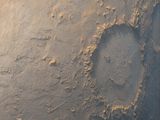Kasomi
JF-Expert Member
- Sep 3, 2014
- 11,036
- 20,337
LIJUE ZIWA NGOSI

Ziwa Ngosi (pia Ngozi) linapatikana kwenye milima ya Uporoto, Mkoa wa Mbeya nyanda za juu kusini mwaTanzania. Ziwa hili limetokana na mlipuko wa volkeno, hivyo ni tofauti na maziwa mengine kama Ziwa Viktoria au Ziwa Nyasa. Upekee wa ziwa hili ni kwamba liko ndani ya kasoko ya mlima Ngozi na katikati ya misitu na lina urefuwa km 2.5, upana wake ni km 1.5, kinachake ni mita 74 na lina ukubwa wahektari 9332.
Maajabu mengine katika ziwa hili ni kwamba maji ya Ziwa Ngozi huwa lina muonekano wa rangi tofauti tofauti kila wakati, kuna wakati ukifika unakuta ziwa lina rangi ya samawati, kijani au nyeusi. Ni kwamba uwepo wa misitu husababisha rangi ya maji kubadilika na upande wa jua linapowaka.
Ndege hupendelea kuogelea pamoja na aina fulani ya bata huwa wanaogelea humo kwa wingi na kufanya ziwa kuwa na muonekano wa kupendeza zaidi.
Licha ya kuwa ziwa hilo linavutia kuangalia lakini halina samaki wala kuwa na historia ya uwepo wake na vilevile si rafiki kwa kuogelea
Na Emmanuel Kasomi
